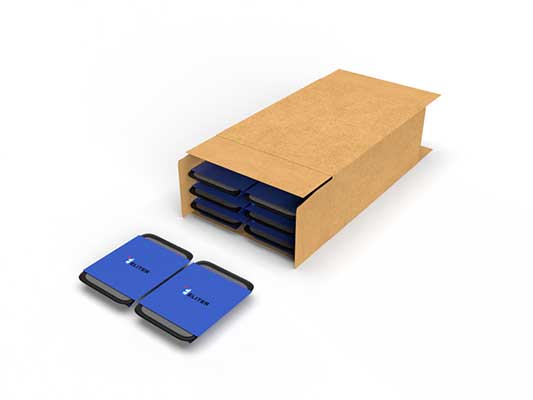Packaging is the key factor for product protection in all industries. Here we talk about the different packaging and their characteristics.

In this article, we will delve into the different types of packaging, their characteristics and differences in order to be stored.
The concept of packaging refers to the elements that provide protection and grouping to the goods for transport, storage and handling.
In the total processes of the supply chain, products are exposed to a series of potential risks that the packaging must minimize.
The risks may be due to environmental conditions (extreme temperatures or humidity), handling errors (collapses, scratches, crushing …), deterioration in storage (expiration, erosion, corrosion …) and others such as theft and theft.
These risks will also vary significantly depending on the type of cargo stored, especially if it is the storage of chemical products.
Therefore, the main functions of packaging in the supply chain are summarized in:
The main organization of the types of packaging is made by the place it occupies between the different layers of product protection.
Primary packaging
The primary packaging is the type of packaging that is in direct contact with the products, is responsible for protecting them and maintaining their ideal characteristics. The primary packaging of a product is the first material or layer that surrounds it and that defines the smallest unit of sale of this.
It is important that the primary packaging, in addition to keeping the product in proper condition, fulfills a function of attraction and attracting attention, since it will be the first image that the final customer receives when having contact with the product. This is especially important in consumer products or online sales.
The primary packaging has the functions of isolating, protecting, securing, informing about characteristics and expiration, and in some cases, attracting attention and loyalty.
It is a packaging that will hardly have relevance nor will it be visible in the day-to-day, since it will be covered and grouped by the secondary and tertiary packaging.
As an example, primary packaging of a commodity is considered:
Secondary packaging
The secondary packaging is responsible for creating package units by grouping several primary packaging, to provide them with greater ease of storage, transport and handling.
Usually, this type of packaging adds a reinforcement to contain the individual sales units. But in consumer products sometimes, it enacts as a role of communication and attraction to offer space for information display.
In most of the cases, the secondary packaging comes in the form of carton boxes or other materials of different sizes and thicknesses, but also in the form of plastic film such as overwrapping.
Some examples for consumer products are the carton box in which beer bottles are grouped or the shrink wrapping plastic film that groups water bottles.
Tertiary packaging
The tertiary packaging will usually be the outer layer, the last and the largest packaging, also the one that will be stored and handled.
Obviously, the tertiary packaging will be formed by grouping products which are in primary and secondary packaging.
The most common type of tertiary packaging is in the form of pallets of different materials, rigid or corrugated cardboard boxes, containers or any other element that creates a loading unit for the simple transport and storage of the goods.
In tertiary packaging, the compaction of the goods and the stability and resistance of the loading unit will be key in order to be stored in industrial racks with total safety and optimizing the available plant space to the maximum.
Therefore, as a concrete summary in the case of wine as a product, the primary packaging would be the bottle, the secondary packaging the cardboard box where the bottles are grouped, and the tertiary packaging the pallet that groups several of the wine boxes.
The choice of the right packaging for a specific product is a decision that, as we have seen, influences all phases of the supply chain and the satisfaction of the final customer.
When deciding on one type of packaging or another, the following variables must be considered:

About the Author
Zixin Yuan – Digital Marketing Coordinator at ÉLITER Packaging Machinery, manufacturer and global supplier of cartoning machine, overwrapping machine and wrap-around sleever. For more information, please visit: https://www.eliter-packaging.com
In this episode, I sat down with Beejan Giga, Director | Partner and Caleb Emerson, Senior Results Manager at Carpedia International. We discussed the insights behind their recent Industry Today article, “Thinking Three Moves Ahead” and together we explored how manufacturers can plan more strategically, align with their suppliers, and build the operational discipline needed to support intentional, sustainable growth. It was a conversation packed with practical perspectives on navigating a fast-changing industry landscape.